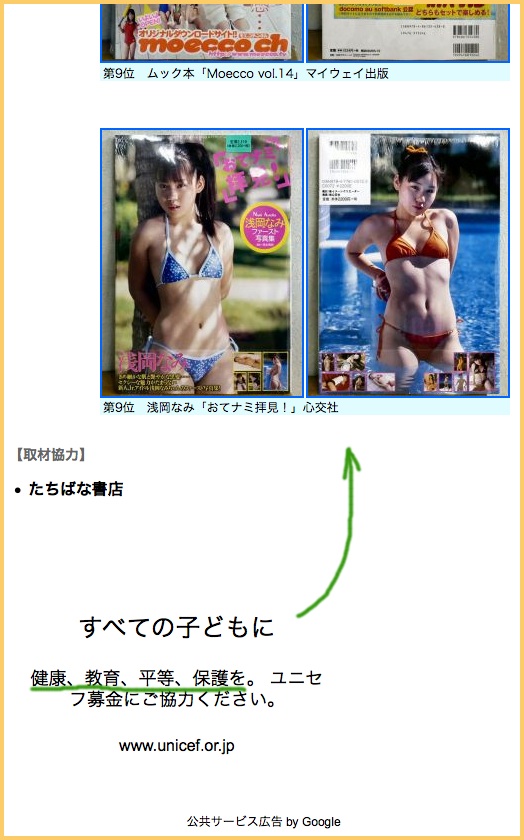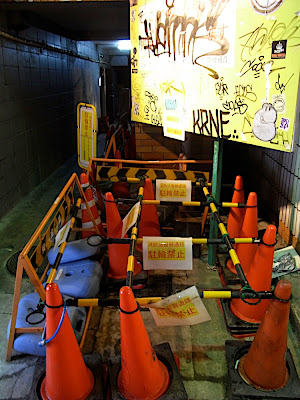Estaba yo poniéndome al día en tecnología japonesa leyendo ASCII cuando me encontré uno de esos artículos que ponen de vez en cuando que no tienen nada que ver con tecnología. Esta vez es un artículo sobre revistas de fotos de niñas guapas. En uniforme escolar, en bikini… Hay de todo. No son revistas pornográficas y parece que son perfectamente legales, claro que es fácil pensar mal cuando uno ve hombres de mediana edad comprándolas.
今日ASCIIで日本のテクノロジー ニュースを読んでたら、たまにある「テクノロジー関係ない」記事を見つけた。今回は子供アイドル雑誌についての記事だ。制服、水着・・・なんでもあるみたい。エロ本じゃないらしいし、違法でもなさそう。でもおじさんが買ってるところを見られたら仕方なく怪しまれると思う。
I was getting myself up-to-date in Japanese tech reading ASCII when I found one of those articles that are completely unrelated to the tech world. It’s an article about magazines that show pictures of Japanese young girls. In school uniform, bikini… Anything. Beware they aren’t porn magazines and looks like they are 100% legal, but it’s hard no to suspect when one sees middle-aged men buying them.

Pero estas revistas llevan muchos años así. Lo que me ha llamado la atención hoy es que en los anuncios contextuales, que Google elige automáticamente según el contenido, me ha salido un anuncio de UNICEF pidiendo donativos para ayudar a que todos los niños tengan «salud, educación, igualdad y protección». Me ha parecido ridículo y contradictorio con el contenido de la página donde se muestra (sobre todo lo de «protección») y he hecho una foto de la pantalla porque puede que os salgan anuncios diferentes cuando miréis vosotros. ¿Qué? ¿Os han dado ganas de hacer un pequeño donativo a Unicef?
でもこういう雑誌は前からこんな感じだったらしい。僕は今日驚いたのは記事の下に載っていた広告だ。グーグルがコンテンツによって自動的に合わせる広告の枠に、ユニセフの広告が載ってた。「すべての子どもに健康、教育、平等、保護を。ユニセフ募金にご協力ください。」表示されているページのコンテンツと、爆笑出来るほど合わないと思う。特に「保護」の件ね。みんなASCIIのページに行ったら表示される広告が違うかも知れないから僕の画面の写真をこの上に載せた。それでは、募金にご協力はいかが?
But this kind of magazines have been this way for some years now. What surprised me today is the contextual ads, those text ads Google chooses dynamically depending on the content. I got an ad from UNICEF asking me to donate for all children’s «health, education, equity and protection». It looked quite ridiculous and contradicting to me, especially the part about «protection». So I took a screen capture for you guys to enjoy it, as you might get a different ad. How about a small donation to Unicef?


